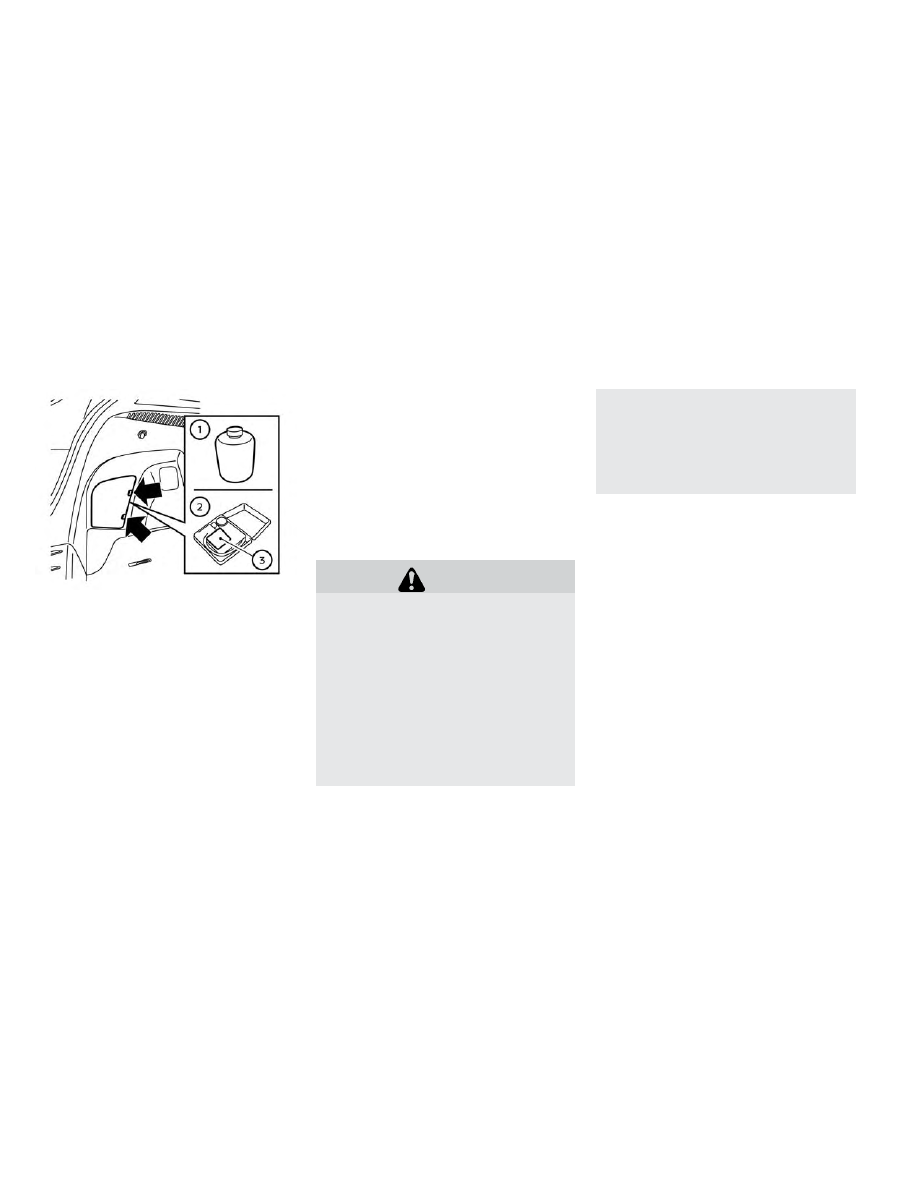Nissan Leaf (2019 year). Manual - part 31

Getting emergency tire puncture
repair kit
Take out the emergency tire puncture re-
pair kit located in the cargo area. The repair
kit consists of the following items:
䊊
1
Tire sealant bottle
䊊
2
Air compressor*
䊊
3
Speed restriction sticker
* The compressor shape may differ de-
pending on the models.
Before using emergency tire
puncture repair kit
• If any foreign object (for example, a screw
or nail) is embedded in the tire, do not
remove it.
• Check the expiration date of the sealant
(shown on the label attached to the
bottle). Never use a sealant whose expira-
tion date has passed.
Repairing tire:
WARNING
Observe the following precautions
when using the tire repair compound.
• Swallowing the compound is dan-
gerous. Immediately drink as much
water as possible and seek prompt
medical assistance.
• Rinse well with lots of water if the
compound comes into contact with
skin or eyes. If irritation persists,
seek prompt medical attention.
• Keep the repair compound out of the
reach of children.
• The emergency repair compound
may cause a malfunction of the tire
pressure sensors and cause the low
tire pressure warning light to illumi-
nate. Have the tire pressure sensor
replaced as soon as possible.
6-6
In case of emergency